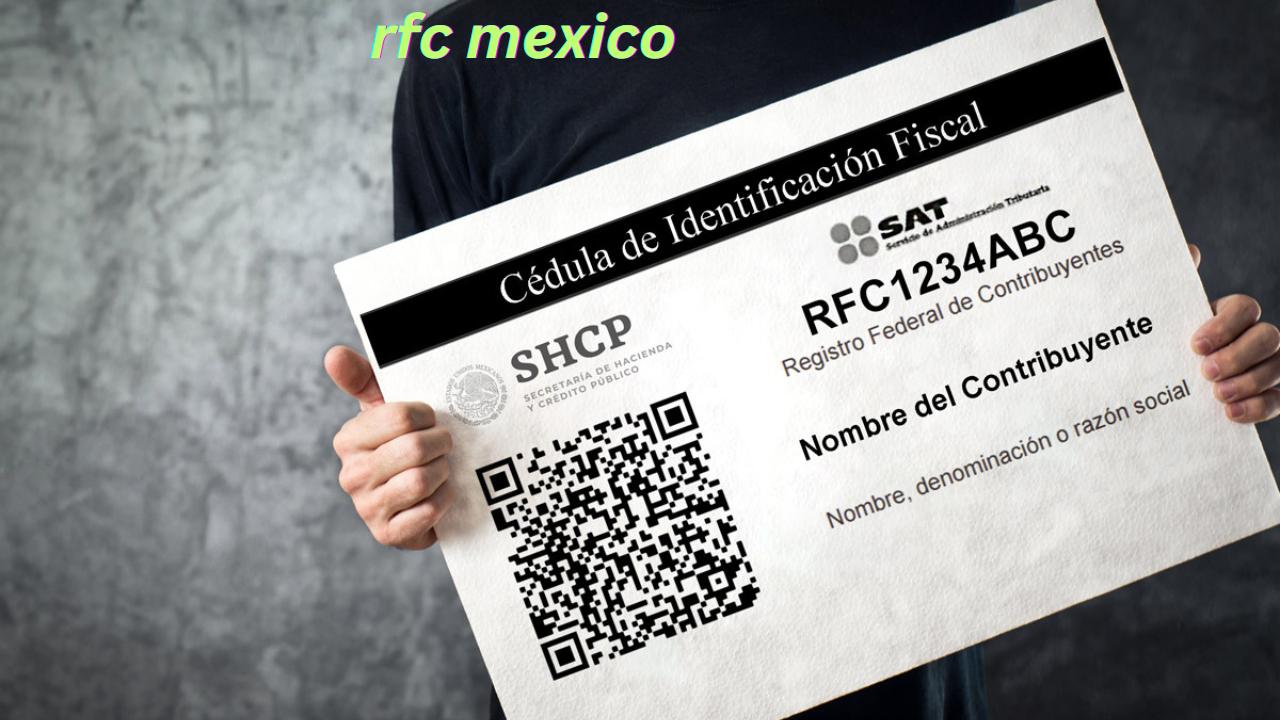Decoding RFC Mexico What It Is Why You Need It, and How to Get One
Navigating the Mexican bureaucracy can be daunting, especially for newcomers or those unfamiliar with local requirements. One of the most essential yet often misunderstood pieces of identification in Mexico is the RFC, or Registro Federal de Contribuyentes. Whether you’re rfc mexico a Mexican citizen, an expat, a freelancer, or a business owner, understanding and obtaining your RFC is a key step toward legal and financial compliance. In this article, we’ll explore what the RFC is, who needs it, how to obtain it, and why it’s crucial for various everyday and official activities in Mexico.
What Is the RFC in Mexico?
The RFC, short for Registro Federal de Contribuyentes, is Mexico’s official taxpayer identification number. It is issued and regulated by the SAT (Servicio de Administración Tributaria)—Mexico’s federal tax authority. Think of the RFC as the equivalent of the Social Security Number (SSN) in the United States or the National Insurance Number in the UK, but with broader applications in both personal and professional contexts.
Every person or entity engaging in economic activity in Mexico is required to have an RFC. It allows SAT to monitor tax contributions, invoice issuance, and financial transactions. Even if you’re not a business owner, having an RFC is often necessary to open a bank account, sign a lease, or apply for a job.
The RFC code itself is alphanumeric and structured to include your personal information—typically the first letters of your name and your date of birth—followed by a unique three-character homoclave that avoids duplicates in the registry. For legal entities like corporations, the code includes the company name and date of incorporation instead.
Understanding how the RFC works lays the foundation for tax compliance, and it’s the first thing authorities look for when dealing with income, employment, or business ownership.
Who Needs an RFC and Why?
You might assume the RFC is just for businesses—but that’s far from the truth. Nearly everyone who engages in financial activity in Mexico needs an RFC.
For Mexican citizens, the RFC is essential for working formally, paying taxes, or applying for scholarships. It’s also required when receiving invoices for deductible expenses, making it important for anyone who wishes to track their financial records or file annual tax returns. Even students might need an RFC if they receive government scholarships or fellowships.
For foreign residents, having an RFC is a must if you plan to live in Mexico long-term. It’s necessary for opening a Mexican bank account, signing utility contracts, buying property, or starting a business. Without an RFC, expats may find it difficult to carry out even basic financial tasks. Many immigration lawyers and relocation specialists will recommend applying for an RFC shortly after receiving temporary or permanent residency.
Businesses and legal entities cannot operate without an RFC. It is required to issue electronic invoices (CFDIs), register employees for social security, file taxes, and engage in contracts with clients or the government. Even small businesses and freelancers are required to obtain one and file taxes regularly, whether monthly or annually.
In short, the RFC is a legal must-have for anyone participating in Mexico’s financial or legal systems.
How to Get an RFC in Mexico
The process for obtaining an RFC varies depending on whether you are a Mexican national or a foreign resident, but the steps are quite manageable with proper documentation.
For Mexican citizens, the RFC can often be obtained online via the SAT portal if you have your CURP (Clave Única de Registro de Población). The system auto-generates your RFC using your CURP data. Alternatively, you can visit a local SAT office (Agencia SAT) to complete the process in person—this is especially common for those who need to register for work or tax purposes.
Required documents typically include:
- Valid official ID (INE, passport)
- Proof of address
- CURP
For foreigners, the process requires a few more steps and an in-person visit to the SAT office. First, you’ll need a valid temporary or permanent residency card issued by INM (Instituto Nacional de Migración). Next, you’ll need your passport, proof of Mexican address, and your CURP—which is usually issued when your residency is approved.
Once you gather your documents, you must schedule rfc mexicoan appointment through the SAT website. At the appointment, SAT will review your documents, generate your RFC, and provide you with an official printout (Constancia de Situación Fiscal). Some foreigners may also choose to work with a bilingual accountant or immigration advisor to streamline the process.
Why Is the RFC Important in Everyday Life?

The RFC goes far beyond tax filing. It is a key piece of identification used in many everyday situations across Mexico.
You’ll need your RFC to:
- Open a bank account or investment portfolio
- Get paid through formal employment
- Sign lease agreements or utility contracts
- Buy or register property and vehicles
- Subscribe to postpaid phone services
- Apply for credit cards or loans
For freelancers, having an RFC is crucial for issuing invoices (facturas) that include IVA (Value-Added Tax), which many clients require. This allows for expense deductions and better tracking of financial earnings. It also enables self-employed individuals to make voluntary contributions to Mexico’s social security system or retirement savings funds.
From a legal standpoint, RFC compliance ensures you’re on the right side of Mexican tax laws. The SAT monitors income through CFDI (Comprobante Fiscal Digital por Internet), Mexico’s electronic invoicing system, which requires the use of RFCs for both issuers and receivers
Conclusion
The RFC in Mexico isn’t just a bureaucratic formality—it’s your key to unlocking legal and financial participation in the country. Whether you’re working, freelancing, opening a business, or simply trying to open a bank account, obtaining your RFC is a foundational step. Understanding what it is, how it’s used, and how to register—especially for foreigners—can make your transition to living or doing business in Mexico much smoother. The process might feel intimidating at first, especially if you’re not fluent in Spanish, but once you have your RFC, many doors open in terms of financial freedom, tax benefits, and legal clarity. Make it a priority—because in Mexico, having an RFC is not just helpful… it’s essential.
FAQs
Q1: What does RFC stand for in Mexico?
RFC stands for Registro Federal de Contribuyentes, which is the official taxpayer identification number in Mexico, issued by the SAT.
Q2: Can foreigners get an RFC in Mexico?
Yes. Foreigners with temporary or permanent residency can obtain an RFC by booking an appointment at SAT and providing necessary documents like a passport and residency card.
Q3: Is the RFC the same as CURP?
No. CURP is a personal identification number for all residents, while RFC is specific to tax obligations and is used primarily for financial and legal transactions.
Q4: Do students or non-working individuals need an RFC?
Yes, especially if they receive scholarships, financial aid, or need to issue invoices or interact with formal institutions.
Q5: Can I register for an RFC online?
Mexican citizens with a CURP can often register online via the SAT portal. Foreigners typically need to register in person
You May Also Read: https://networkinfonews.com/normies-patreon/














Post Comment